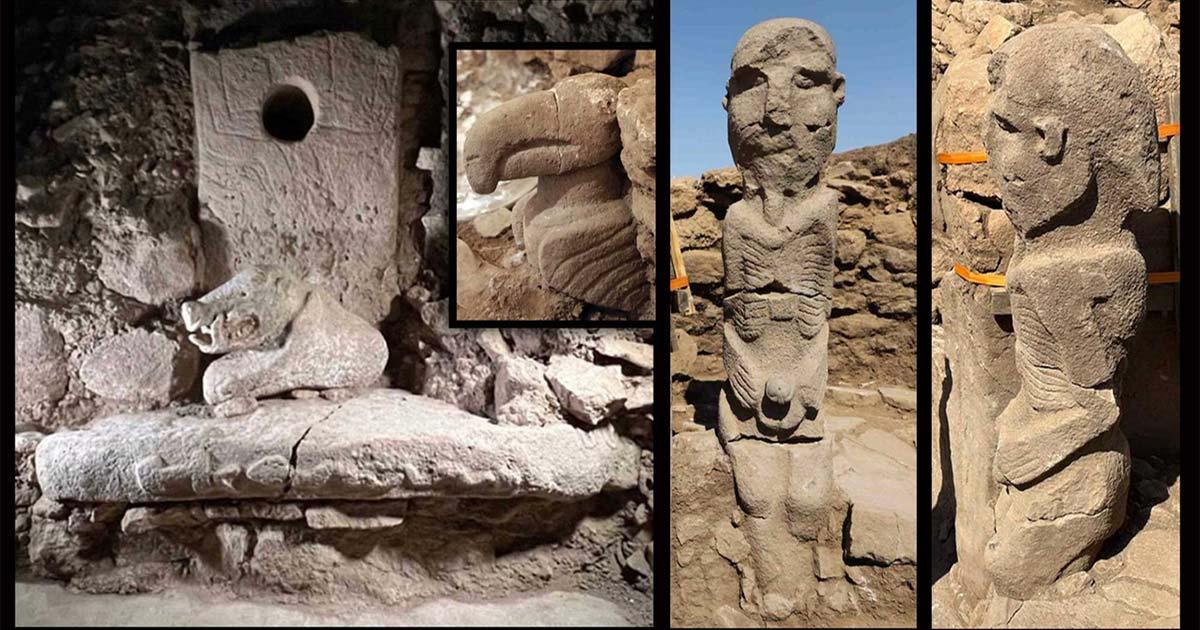Introduction
In Şanlıurfa, Turkey, ongoing archaeological excavations at the iconic sites of Göbeklitepe and Karahantepe are uncovering extraordinary artifacts that have the potential to reshape our understanding of prehistoric art. Among the most significant findings are life-sized sculptures of a wild boar and a human figure, attracting the attention of researchers and historians around the globe.
The Significance of Life-Sized Sculptures
These life-sized sculptures, believed to date back to the Neolithic period, may represent the oldest known life-sized human statue ever discovered. Currently, this title belongs to the Urfa Man, also found in Turkey, estimated to date back to approximately 9,000 BC. The Urfa Man is a crucial artifact in understanding the early artistic expressions of humanity, showcasing the capabilities and cultural practices of our ancestors.

Göbeklitepe: The Oldest Known Temple Complex
Göbeklitepe, often referred to as the world’s oldest known temple complex, dates back to around 10,000 BC. This site has been instrumental in changing our perceptions of prehistoric societies, challenging the notion that complex religious practices only emerged after the development of agriculture. The site is characterized by its monumental stone pillars, many of which are intricately carved with reliefs depicting animals and abstract symbols. These carvings suggest that early humans engaged in ritualistic and communal activities long before the advent of farming.
Karahantepe: A Complementary Discovery
Karahantepe, located near Göbeklitepe, has recently gained attention due to its own remarkable findings. The ongoing excavations here have revealed additional sculptures and artifacts that further highlight the artistic and cultural richness of the period. The connection between the two sites indicates a shared cultural or religious significance, reinforcing the idea that these early communities were deeply interconnected.

Insights into Prehistoric Societies
As research progresses, archaeologists are uncovering more about the social and cultural dynamics of the time, particularly how these ancient communities interacted with their environment and expressed their beliefs through art. The life-sized sculptures discovered at both sites not only emphasize the artistic capabilities of these early peoples but also their understanding of symbolism and representation. These findings invite us to reconsider the role of art in the lives of our ancestors and how it may have served as a medium for expressing identity, spirituality, and community values.
A Connection to Our Shared Human Heritage
The archaeological endeavors in Şanlıurfa enrich our knowledge of ancient civilizations and connect us to our shared human heritage. The desire to create and represent life through art has been a fundamental aspect of human existence for millennia. As we learn more about these remarkable discoveries, we gain valuable insights into the creativity and cultural expressions of our ancestors, which continue to resonate in our own artistic practices today.

Conclusion
The discoveries at Göbeklitepe and Karahantepe are not merely archaeological finds; they are windows into the distant past, revealing the complexity of early human societies. As excavations continue, we can only anticipate what additional secrets these ancient sites may hold, further illuminating the rich tapestry of our collective history.

